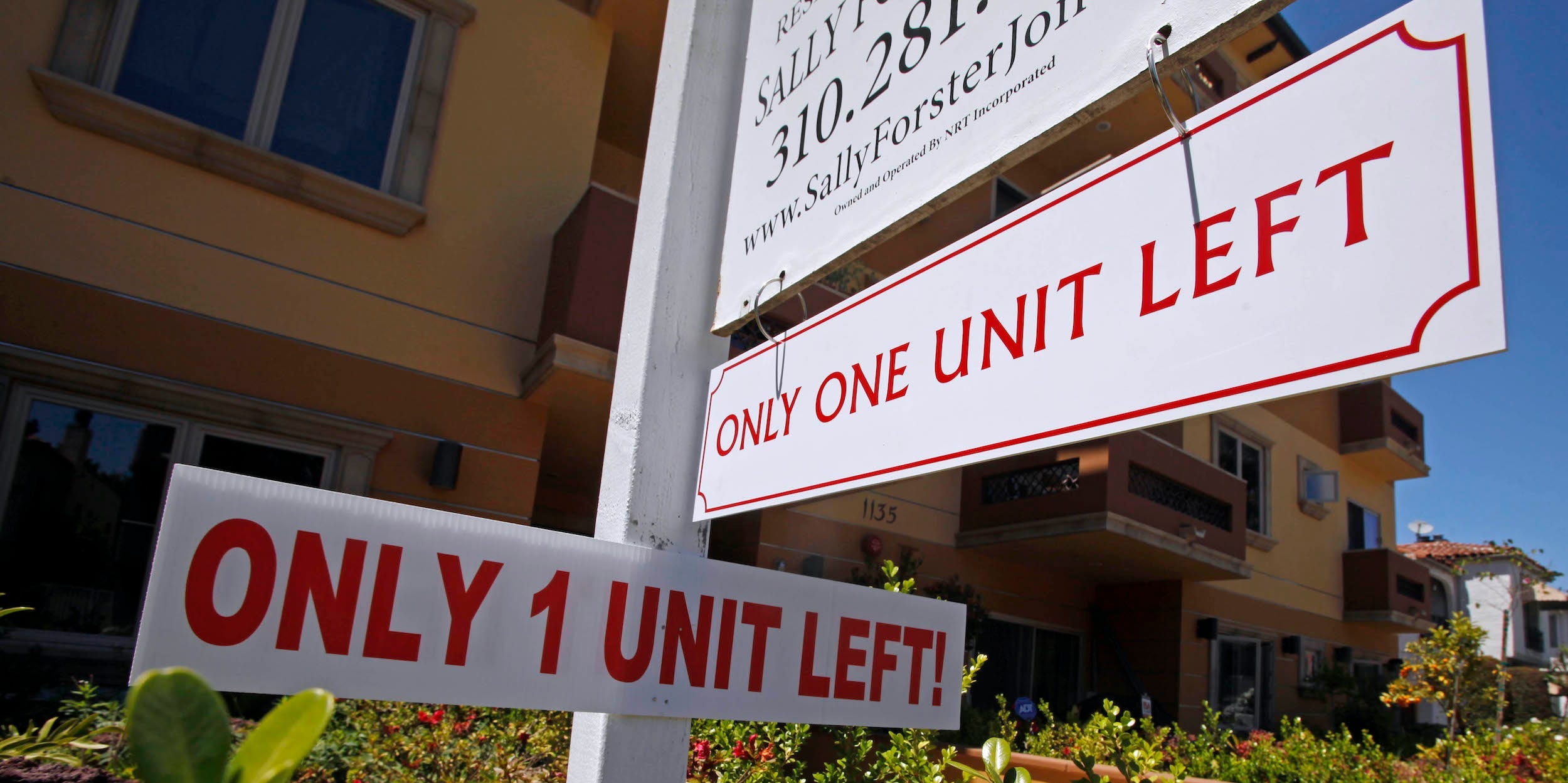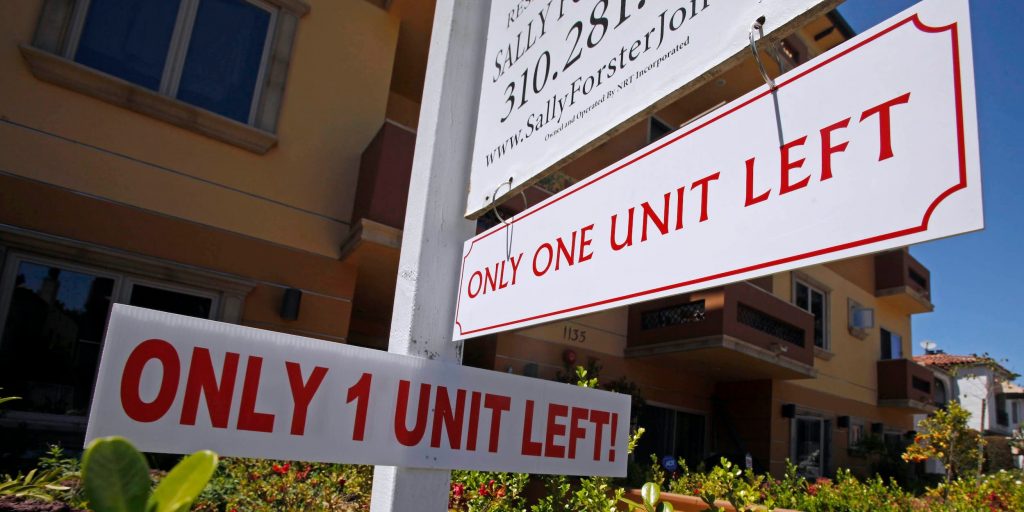
- Existing home sales fell 2.7% in April to a yearly pace of 5.85 million units, the National Association of Realtors said.
- Also last month, the median price for previously owned homes rose to a record-high $341,000.
- Unsold inventory rose to a 2.4-month supply and remains strained by huge demand and inadequate building.
- See more stories on Insider's business page.
The housing market unexpectedly slowed – again – in April as a lack of adequate inventory and soaring prices hindered buying activity.
Sales of existing homes in the US dropped 2.7% last month to an annualized pace of 5.85 million units, the National Association of Realtors said Friday. The median estimate from economists surveyed by Bloomberg was for a jump to a 6.07 million unit rate. The drop marks a third straight decline, though sales are still up 20% year to date as massive demand locks horns with strained supply.
The median price for previously owned homes soared 19.1% year-over-year to a record-high $341,000, with price hikes recorded across every region in the US.
Total inventory rose to 1.16 million homes by the end of April, according to the report. Unsold inventory rose to a 2.4-month supply at the current sales pace, up from the March reading of 2.1 months. While the cooling rate of homebuying activity has bolstered unsold supply, the figures still sit near record lows. Demand is expected to stay elevated through the year and continued reopening should help prop up supply, Lawrence Yun, chief economist at NAR, said in a statement.
"We'll see more inventory come to the market later this year as further COVID-19 vaccinations are administered and potential home sellers become more comfortable listing and showing their homes. The falling number of homeowners in mortgage forbearance will also bring about more inventory.
At a crossroads
The housing market is at a crossroads. The severe lack of supply has driven prices higher at a record pace. Yet soaring lumber costs and lot shortages have hindered contractors' ability to shore up inventory. Housing starts sank nearly 10% in April, signaling a rebound in homebuilding won't be as strong as prospective buyers likely hoped.
The supply strains are intensifying just as millennials near their peak homebuying age. The generation is expected to drive the next wave of housing demand. But persistently soaring prices and scarcity risk pricing them out of the market just as they start looking.
"First-time buyers in particular are having trouble securing that first home for a multitude of reasons, including not enough affordable properties, competition with cash buyers, and properties leaving the market at such a rapid pace," Yun said.
Skyrocketing prices have already driven some out of the buyers' market and toward renting, but still-elevated sales are now spilling into that market. Rent prices for single-family homes rose 4.3% year-over-year in March to their highest since 2006, CoreLogic said Tuesday. More than one-third of consumers said rentals in their neighborhood were either not very affordable or not at all affordable, according to the report. Separately, a CoreLogic survey found nearly 70% of consumers cited soaring home prices as a reason to rent.
Construction is expected to rebound through the year. Economists expect home-price inflation to fall to 8.1% this year and 5% in 2022, according to a survey conducted by the Urban Land Institute. At the same time, single-family home starts are expected to reach an annualized rate of 1.1 million in 2021 before trending at 1.2 million through 2023.
That still won't be enough to match supply with demand, according to Goldman Sachs. Population growth, demographic shifts, and the pace of demolitions suggest contractors would need to build 1.3 million homes annually for the next few years to match the rate of household creation, economists led by Ronnie Walker said, before concluding that pace won't be met.

